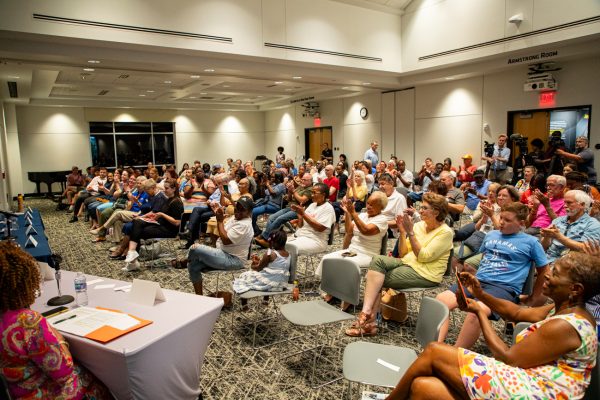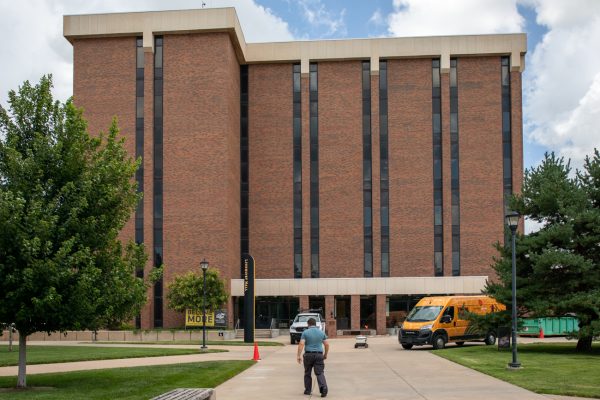Behind the walls: Henrion Hall
“Bo-WHAP!” ceramics major Lydia Harris throws a log of clay against a wooden table.
“Saa-ZIINgg,” a sculptor works with a piece of oak in the woodwork studio.
“TSS-Eeeek,” a graduate painter climbs the narrow staircase to the second floor.
These sounds dance daily within the walls of Henrion Hall at Wichita State.
“It is very loud and creaky, especially when there are people working,” Harris said. “The sound really carries in here.”
Located on the south side of campus, Henrion Hall was built in 1921. The building was the first permanent gymnasium at WSU.
A women’s gym was built in 1929. Male and female lockers were added in 1937.
Henrion, Fiske Hall and Wilner Auditorium made up the core of the university from the early 20th century.
The building served as the basketball gym until 1983, when the Heskett Center opened.
Adjunct professor of pottery and ceramics Gary Lincoln played intramural basketball with his fraternity Phi Delta Theta at Henrion in 1962.
“My memory of it is a place to play basketball,” Lincoln said. “I think it is a great building and I like the way it was appropriated.”
The building is now home to the School of Art and Design and Studio Art. But the remnants of the gymnasium are alive and give the building character.
Hardwood floors, tight corridors and high ceilings give the building an airy, open feel. These features also make the building drafty and diminish the air quality because dust from the studios lingers in the air.
“It needs a drastic improvement in air quality,” Lincoln said.
Eight-foot walls dissect the pottery studios and give students private studio space. The hardwood floor is coated with the white dust of plaster and clay.
Across the hall is an open room with wooden tables, where Harris and other ceramics students smack, manipulate and make pottery to be fired in the furnaces outside.
Adjacent to this room is an old ramp that bends in the middle and leads up to the woodworking and metalworking studio.
Around the corner is a staircase that leads upstairs to painting studios on the second floor.
The rooms are filled with artists’ projects — a few finished ones line the walls, while scraps of paper clutter the floor.
It’s an artists’ atmosphere.
The halls are narrow and dim. They are more reminiscent of an old hotel instead of a university building.
The mixture of the old and the new creates a “vibe” that sculpture major Jarrod Maddux enjoys about the building.
“It is antiquated,” Maddux said. “You can tell there is a lot of history in the building. You see remnants of the old and the also parts of the new.”







